At midday in Kyoto James and I were enjoying a quirky Japanese TV show – a miscellany of over-excited hosts, cartoonish animation, and video game-ish sound – sitting cross-legged on the comfortable tatami mat inside our hotel room. At the same time on our laptops we were looking up the city’s weather forecast for the rest of the day. “Apparently it’s going to be sunny this afternoon,” James spoke up, followed by an impulsive suggestion, “do you want to go back to Kinkaku-ji?”
The Temple of the Golden Pavilion (Kinkaku-ji) was always meant to be one of the highlights of our trip to the Japanese ancient capital, so much so we went there the first morning after we arrived in Kyoto. On our first visit, hoping to beat the crowds, we were already at the front gate of the temple compound before it was open. Also waiting were groups of Japanese schoolchildren and a few other tourists. As soon as the gate was opened, everyone lined up in an orderly manner then walked briskly toward a pond where a three-story gold-plated pavilion stood just across the calm waters. Even on a cloudy day like that morning, Kinkaku-ji’s refined splendor radiated in the air, with visitors at the other side of the pool vying for the best spot to take photos of one of Kyoto’s most iconic landmarks. For modern-day visitors, the Golden Pavilion’s facade exudes a sense of tranquility and peace. But its long history is anything but.
Completed in the late 14th century, Kinkaku-ji was purchased by Ashikaga Yoshimitsu, a shogun (military leader who was also the de facto ruler of Japan) of the Muromachi period, as his villa. After his death, as indicated in his will, Yoshimitsu’s son turned the villa into a temple of the Zen sect of Buddhism. However, more than half a decade after Kinkaku-ji’s completion when the shogun at that time, Ashikaga Yoshimasa (Yoshimitsu’s grandson), was considering retirement, Japan was about to face a difficult time in its history. This plan sparked a dispute between Hosokawa Katsumoto (one of the deputies to the shogun) and his father-in-law Yamana Mochitoyo (a daimyo, feudal lord) over who should succeed the shogun. The Hosokawa clan supported the shogun’s brother as his successor, while the Yamana clan chose the infant son of the shogun.
Skirmishes began to develop between the two clans and their supporters, leading to a 10-year civil war known as the Onin War. Among the victims of the war were almost all the buildings in Kinkaku-ji’s compound, leaving the golden pavilion itself as a sole survivor. While Kyoto was engulfed in the war, Ashikaga Yoshimasa was more interested in cultural activities, as well as planning for Ginkaku-ji, a silver pavilion to rival his grandfather’s golden pavilion. However, the war forced construction on Ginkaku-ji to come to a halt, chiefly with regard to the application of silver foil, leaving the main structure’s wooden elements exposed. In fact, what visitors see today is exactly how Yoshimasa last saw it before his death. Nevertheless, the silver pavilion’s unfinished appearance has become a prime example of a Japanese aesthetic later known as wabi-sabi, beauty in transience and imperfection.
More than five centuries after its completion, and five years after Japan’s defeat in World War II, an arson attack completely burned down Kinkaku-ji. The perpetrator, a novice monk who was later diagnosed with mental illnesses, died six years later of tuberculosis. An extensive reconstruction was carried out in 1955, with the new structure built as close as to the original blueprint. Several decades and further restoration works later, today Kinkaku-ji stands elegantly inside a lush Japanese garden which together emanate peace and tranquility once again.
For obvious reasons I said yes to James’ idea of going back to the golden pavilion that sunny day, while wondering how its gilded facade would reflect the soft afternoon sun to the calm pond. After a bus ride across the city and a short walk to the temple compound, there it was, glistening with a gentle breeze creating subtle ripples on the pond which rendered a playful reflection of sunlight on the temple’s ceilings. Beautiful was an understatement.




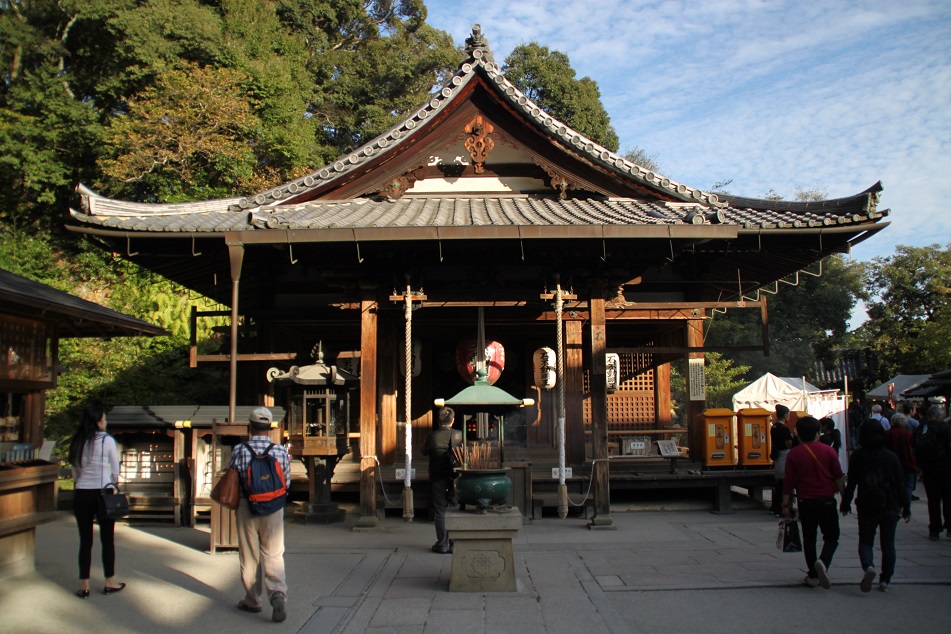


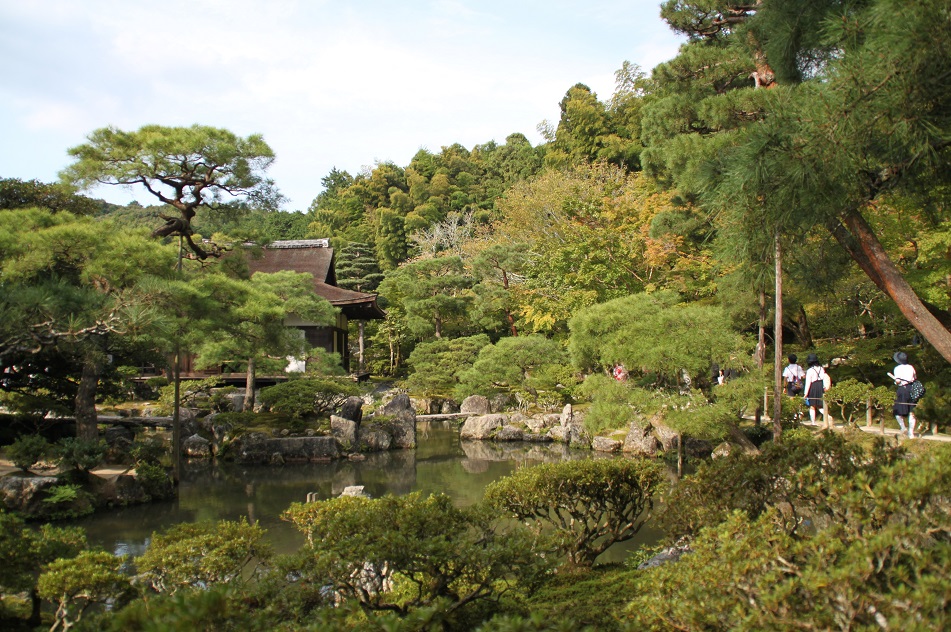
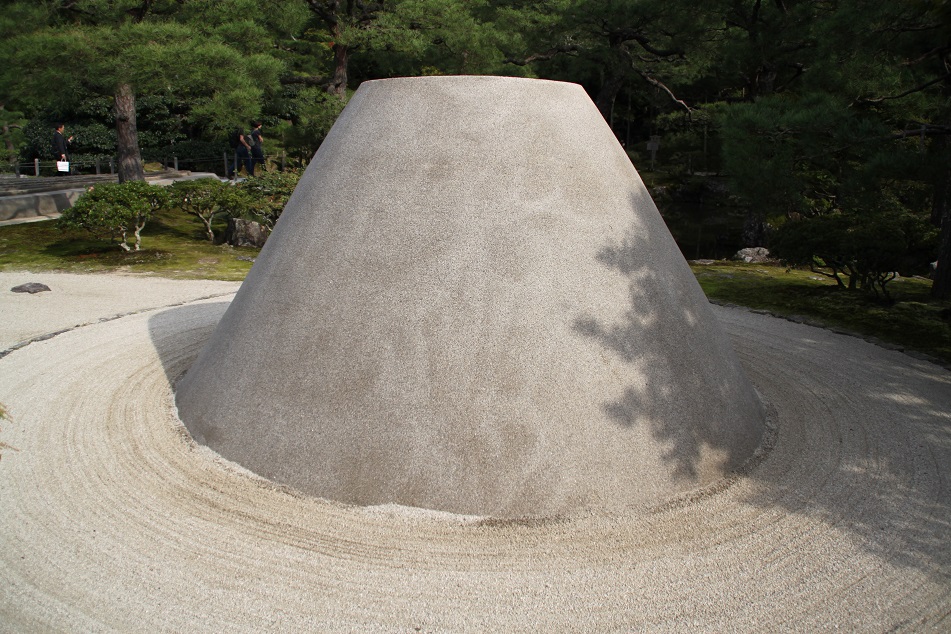

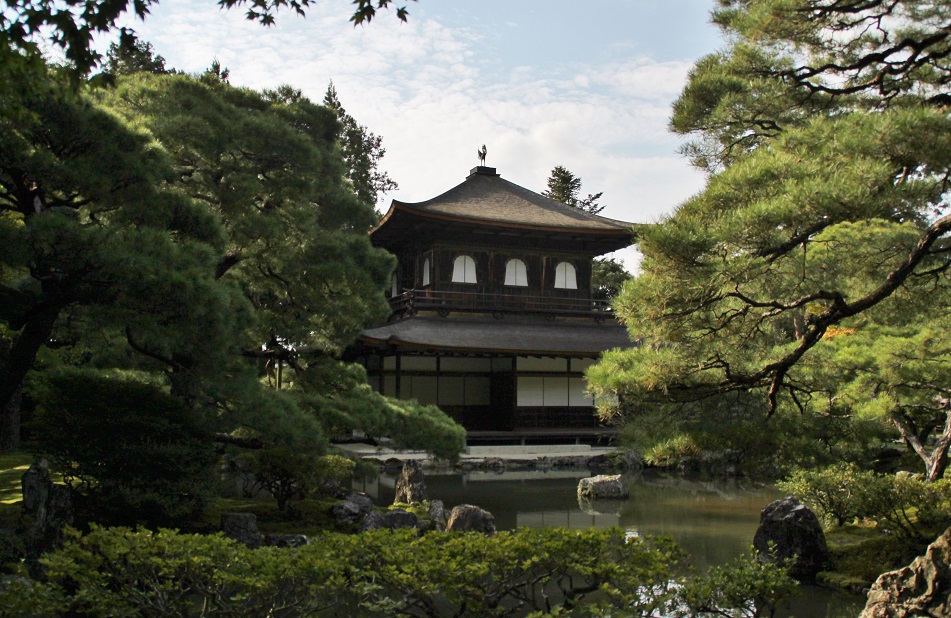
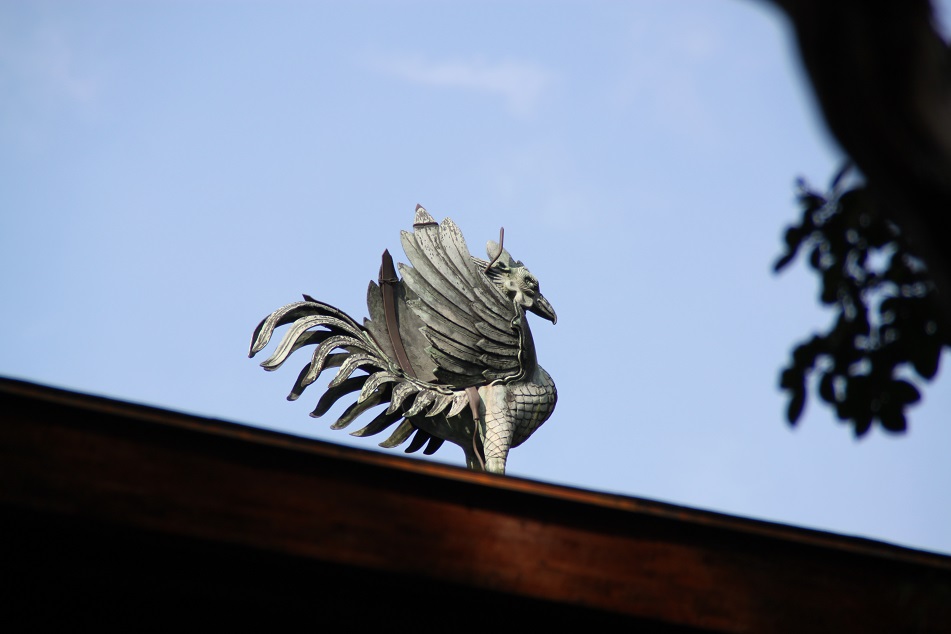
Fascinating post! It’s like being in Tokyo. Thank you!
LikeLiked by 1 person
Thanks Peter! I’ve never been to Tokyo, but I imagine it to be much more crowded and modern than Kyoto. Maybe I should check the Japanese capital next time I go!
LikeLiked by 2 people
Looks very beautiful – thanks for sharing!
LikeLike
One aspect I love about Zen Buddhist architecture is its emphasis on restraint and simplicity, which of course inspired modernist style we know today. Thanks for reading, Emma & Matt!
LikeLiked by 1 person
La descripcion que haces y las fotos son maravillosas, gracias.
LikeLike
Muchas gracias! Thanks for dropping by!
LikeLiked by 1 person
Marvellous! It was a brilliant idea to re-visit the Pavilions 😉
LikeLike
It was not the first time we revisited places we loved so much during our travels, and most of the times it was worth going back for the second, third, or fourth time! 🙂 Thanks for reading!
LikeLiked by 2 people
Thank you for this post, it was really interesting to read. Great pictures! 🙂
LikeLike
And thank you for reading, Monika! Glad you enjoyed the photos and a little bit of history of both places.
LikeLike
Stunning — you keep reminding me that I still have a lot to see in this world. Have you ever watched Departures? It’s the absolute best Japanese movie I’ve ever seen.
LikeLike
Don’t we all do? Seven years blogging and the list of places I want to see in the world only keeps growing. Actually I wasn’t aware of that movie until you mentioned it — In fact, I’m not that familiar with Japanese movies. I will definitely watch Departures whenever I find it. Thanks!
LikeLiked by 1 person
As usual, stunning photos!
LikeLike
And as always, I really appreciate your kind words, John & Susan!
LikeLike
Wonderful photos Bama. We’re planning on being in Japan for a couple of weeks in the spring so will definitely make sure we go to Kinkaku-ji.
Alison
LikeLike
Thanks Alison! You should definitely spend a great amount of time in Kyoto — it’s just so fascinating! Also, I hope the weather will be great when you come to Japan!
LikeLiked by 2 people
Seems like this place is a popular place for schools to visit. The last time I was there it seemed like half the schools in Kyoto were there.
LikeLike
It’s very popular for an obvious reason, although I can’t imagine that many kids flocking to the temple compound! However, being Japan I wonder if those schoolchildren were all very well-mannered and moved in an orderly pace.
LikeLike
Yes they do. But it’s still crowded all the same.
LikeLiked by 1 person
Sooo pretty, ya! I love the reflection on the water and the serene surrounding. I’ll be in Kyoto next week. I should really remind myself to visit this temple. You know, usually I easily get distracted by food stalls and forget about places I plan to visit :p
LikeLiked by 1 person
Banget! Dan gak nyesel balik lagi ke Kinkaku-ji pas cuaca cerah karena pantulan matahari di dinding emasnya itu bener-bener menghipnotis saking cantiknya. Hope you’ll have enough time in Kyoto to pay Kinkaku-ji (and probably Ginkaku-ji as well) a visit! However, speaking of food, don’t miss Nishiki Market!
LikeLike
wow, I wish I could come join lol. this blog post would make someone take a trip to Japan, it is very beautiful!
LikeLike
Much appreciated, Jonathan!
LikeLiked by 1 person
I can see why they call it a golden pavilion, you’ve managed to capture it perfectly. 😉
LikeLiked by 1 person
Not all building covered in gold look pretty. But Kinkaku-ji certainly is one of those edifices where the application of gold was done in a very tasteful way. Thanks for your kind words!
LikeLiked by 2 people
Great shot! I was there too in last year’s November. Hard to imagine it was burnt before.
LikeLike
Thanks Chelsea! They did a really good job reconstructing and preserving the pavilion it’s indeed hard to imagine it once fell victim to an arson.
LikeLike
I went to Kinkaku-Ji three times, once arriving right before it was due to close, but the other two times I got luckier. It didn’t, however, turn out to be my favourite temple complex, just due to the sheer numbers of visitors. I somehow liked Fushimi Inari better, perhaps because I happened to attend two anthropology classes where the whole Inari cult was explained… It seemed a lot “livelier” if you see what I mean!
LikeLike
I remember having to wait for several minutes to finally get a spot to take some photos of the pavilion from the other side of the pond. There was this particular family who kept taking photos of themselves regardless of the many eyes preying on that “prime spot”. Oh well, such is the thing with very popular places these days. In fact, when I went to Fushimi Inari there were just sooo many people! I enjoyed my time exploring the temple ground, though. But I can imagine it being much atmospheric with a lot less souls. 🙂
LikeLiked by 1 person
That is really amazing place! Thanks for reminding me our trip a couple years ago! Great shots as always. K
LikeLiked by 1 person
Thanks Kamila! Glad this post brought back some fond memories of your trip to Kyoto. It’s one of those places where I can see myself returning so many times!
LikeLiked by 1 person
Beautiful post and amazing photos, definitely place to be.
LikeLike
Thank you for reading and leaving such a kind comment! Kyoto is indeed worth going even though you live at the other side of the world.
LikeLiked by 1 person
Absolutely breathtaking. I can imagine the pictures don’t do the real experience justice. We’re hoping to spend some time in Japan in the future. I read amazing things about Hokkaido- and basically everywhere else. Thank you for sharing!
LikeLike
Thanks for dropping by! Before I came to Japan, everyone I knew always told me good things about Japan. I left for the country with a question hanging in my mind, “is Japan really that nice?” My experience confirmed that it really is. The people, the food, the culture, the heritage sites, and the quirkiness Japanese are famous for … all made my trip a very memorable one. Hope you’ll get the chance to go there sooner than later!
LikeLike
Wow!! Beautiful photo and so much amazing history!!
LikeLiked by 2 people
Thanks! Japan is steeped in history, and fortunately there are still cities like Kyoto where we can see the country’s past and marvel at its cultural heritage.
LikeLike
So beautiful…..
LikeLike
It really was! As much as I tried to capture the beauty of those pavilions, my photos certainly don’t do justice.
LikeLiked by 1 person
This post made me want to book a flight to Japan! Thank you so much for sharing!!! My blog is about Travel as well and this is definitely on my bucket list!!! Gorgeous pictures by the way!
LikeLike
And thank you so much for reading this post, Jordy! My suggestion is book that flight to Japan now! You won’t regret it. 🙂
LikeLiked by 1 person
Sooooo tempted!!!!!
LikeLike
The Photos your took are Unbelievable!!! their just stunning!! what inspired you to take a trip to japan? I have never been to other country but I would like to go. I will be considering traveling to this place.
LikeLike
Thanks Jonathan! As an Indonesian, I grew up watching anime (Japanese cartoon) and reading manga (Japanese comic books), so I’ve been interested in Japan since I was a kid. Then as I grew up my friend who went to the country told me all the good things about Japan, which really made me curious about it even more. And when I went there myself, I became one of those people who rave about Japan! 🙂 Hope you’ll get the chance to travel to Japan soon!
LikeLiked by 1 person
what is your favorite anime show? oh stop by my profile. I could use your advice about by design??
LikeLike
Reblogged this on Travel freaky .
LikeLike
Nice shots! I’ve been to Japan 9 years ago, but I didn’t manage to see the Golden Pavilion in all his beauty… I guess now it landed on my Bucket list again :).
LikeLiked by 1 person
Thanks Tina! There’s always a reason to go back to Japan, at least for me. 🙂 You really should visit Kinkaku-ji, and when you do I hope the weather will be nice.
LikeLiked by 1 person
What a beautiful place
LikeLike
It really is, Mercy. Thanks for dropping by!
LikeLike
Reblogged this on Jake Steffan and commented:
A true example of Japans stunning architecture.
LikeLike
Nice and fresh to read your post ..reminded me to visit these places before with international friends several time 🙂
LikeLike
Hi Naomi. Thanks for reading and dropping by!
LikeLiked by 1 person
Im going to read your posts later. I’m fascinated with the photos.
LikeLike
Glad you enjoyed the photos, Jeanny. These pavilions really are some of Kyoto’s most beautiful treasures.
LikeLiked by 1 person
God willing, Someday I’d want to be there too.
LikeLiked by 1 person
That golden glow is eternally beautiful. We were there on a cloudy day but the sun peaked through for a few moments right before sunset. I was so happy. Totally worth it for you to go back a second time!
LikeLike
It’s such a beautiful structure, isn’t it? Masterfully covered in gold which if not done in the right way could have made the pavilion look rather gaudy. I’ve seen photos of it in winter where its facade glows against the snow. Truly mesmerizing!
LikeLiked by 1 person
I love how the golden sunlight catches all the greenery. Breath taking shots, and wonderful writing!
xxxx
LikeLike
Thanks Clare! The sunny afternoon, the beautiful pavilion, and the picturesque Japanese garden all made this place worth going back a second time!
LikeLike
Beautiful!
LikeLiked by 1 person
Stunning picture of the Kinkaku-ji! I remember how hard it is to get the right combination of light and a crowd-free spot.
Your description enticed me to google for pictures of the pavilion before the reconstruction. Fascinating that it survived WWII just to fall in the hands of an arsonist a few years later.
– Verne
LikeLike
Thanks Verne! Everyone who has been to Kinkaku-ji knows how challenging it is to get a good vantage point for taking photos of the golden pavilion. But, as I proved it, patience does pay off.
You made a good point about the arson attack. Indeed, many times in history destruction was caused by mad rulers. But sometimes it only takes a deranged person to induce such a great loss — although fortunately Kinkaku-ji was successfully restored.
LikeLiked by 1 person
Ah, I am so thankful we had the chance to go back to Kinkaku-ji on that final full day in Kyoto. Having blue skies and the rays of the afternoon sun made all the difference when it came to taking photos. The crowds were still bearable though I remember it did get frustrating at times when people hogged the best spots to take selfies and the like! Ginkaku-ji is beautiful in its own subtle way, though I can’t help wondering how it might have looked if silver leaf had been applied to the pavilion as originally planned.
LikeLike
I remember one particular family was taking a lot of photos of themselves: the dad with one son, then him with the other son, then him with both, then him with the wife, and this kept going for quite some time. I do wonder though how Ginkaku-ji would have looked like had it been completed since I don’t remember ever seeing any places of worship or monuments that are covered in silver.
LikeLiked by 1 person
Amazing photos of Kinkaku-Ji! My sister and I were frustrated by how little time we had in Kyoto on that all women’s tour of 2012. We had planned a return last April in time for sakura, but her husband’s illness unravelled all our plans. Hoping to return for a more leisurely exploration of Kyoto sometime in the next couple of years..
LikeLike
Oh my, it’s been almost six years since you both took that trip! Where has the time gone? Hopefully that second chance will come to you and your sister very soon, and when it does I do hope that everyone will be blessed with good health and everything goes smoothly.
LikeLiked by 1 person
Mas Bama, dua kali ke Kinkakuji gak pernah dapat sebagus fotonya Mas Bama ini. Cahayanya baguuuuussss banget. Tapi kalau soal taman antara keduanya aku lebih suka Ginkakuji. Mungkin karena Ginkakuji lebih sepi daripada Kinkakuji (walau tetaaaap aja rame!)
By the way, diakhir Kinkakuji sempet cicip es krim tinggi gak??? Enaaakkk hahaha…
LikeLike
Saya lagi beruntung banget mbak pas di Kyoto sempat ketemu langit cerah. Soal taman memang Ginkaku-ji lebih menawan sih menurut saya, karena bisa lihat paviliunnya dari ketinggian juga, dan ada gunung-gunungan itu. 🙂 Nah, waktu di Kinkaku-ji cuma sempet nyobain (dan beli) kacang berbalut wasabi, soalnya emang saya suka banget wasabi. Lain kali kalau saya ke sana saya coba cari es krim tinggi deh. Kayaknya menarik!
LikeLike
Pingback: Nijo-jo: From the Hollyhock to the Chrysanthemum | What an Amazing World!
I actually never knew that the Golden Temple was burned down, wow. I have a picture of myself in front of the Golden Temple, taken back in 1995. I try to look relax, sitting a bit uncomfortably on a wooden fence. I smile, yet nervously and a bit stressed. The Golden Temple is one of those places that act as the face of a country’s beauty. Being in the midst of the analog era, I was smiling nervously because I really didn’t want this picture to fail. Only weeks after my visit, having returned to the Netherlands, I developed my films. Now a relaxed smile appeared on my face; such a beautiful image….
LikeLike
Oh the suspense of taking photos with analog camera back then! From your photo it looks like Kinkaku-ji, or even Kyoto in general, was a much less busy place 23 years ago. I wonder if you can handle the throngs of tourists now, though. However, Kinkaku-ji looks as elegant in your photo as it does today. Thanks for sharing your memory, Emiel!
LikeLike